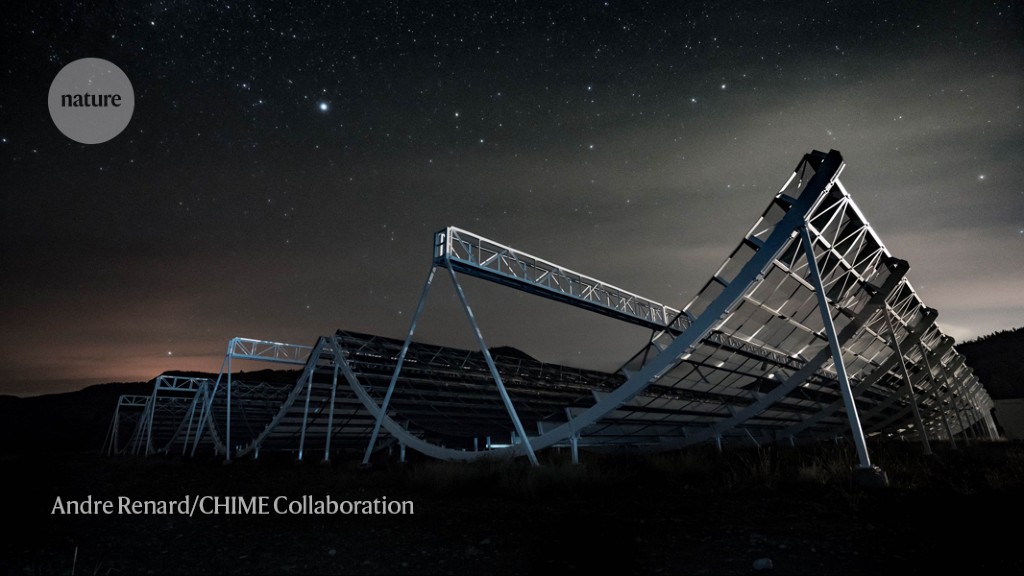
“I woke up this morning and all my Slack channels were full of people talking about the papers,†says Laura Spitler, an astrophysicist at the Max Planck Institute for Radio Astronomy in Bonn, Germany, who co-discovered the first repeating burst2 in 2016 using the now-collapsed Arecibo telescope in Puerto Rico.
CHIME was initially conceived for mapping the distribution of matter in the Universe, but a complex kit of additional electronics was added in its design so that it could pick up fast radio bursts as well.While the jury is still out on what causes fast radio bursts, the CHIME results seem to cement the idea that there are at least two distinct types.Sixty-one of the 535 detected were ‘repeaters’ — coming from 18 sources that have been seen emitting bursts multiple times.
Repeaters also emit on a much narrower band of radio frequencies than do one-off bursts.
Until recently, the evidence for this was not strong: some astronomers argued that non-repeating bursts could have just been repeaters that had not been observed long enough to see them burst again.Cataclysmic events such as the collision of two neutron stars could be a source of non-repeating fast radio bursts (illustration).Credit: NASA's Goddard Space Flight Center/CI Lab.Fast radio bursts tend to be detected over one second or more.The ‘repeater’ discovered by Spitler and her collaborators in 2016, for example, has cycles of activity lasting a day or so — emitting several bursts per hour — and repeating every 160 days.
Bevy of mysterious fast radio bursts spotted by Canadian telescope.As the neutron star periodically gets closer to its companion, bursts could result from its magnetic field scattering the highly energetic stellar windG
The first discovery of a fast radio burst in 2007 came as a shock to researchers, and for many years only a handful were known, Masui recalls.Now CHIME has reversed that trend, he says, “I don’t think theorists will catch up with us.†And this first catalogue is only the beginning: since it was collected, the team has continued to detect many more fast radio bursts, and will publish them for years to come.